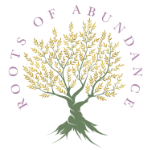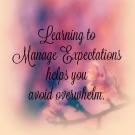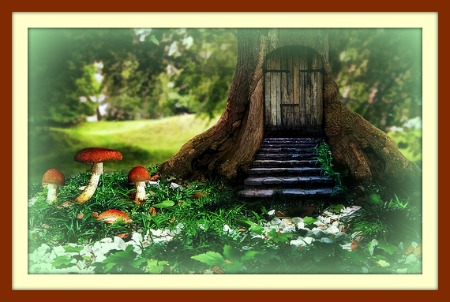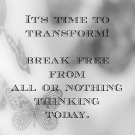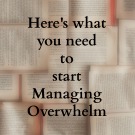There’s a debate in the stratosphere about whether life balance or work/life balance is possible. Some believe that there is no separation between work and life – it’s all in how we spend our time. Others think that balance looks like a scale with each side balanced equally against another. And sadly, others believe none of its possible even if it is real; that balance can’t be achieved because of the demands that we and others put on ourselves.
My belief is balance is 100% real, possible, and achievable, it’s just in the way you look at it. And looking at it in the scales equal on each side isn’t going to cut it anymore. It’s achievable by shifting to something new: a focus on feelings. Finding what works best takes time, patience, and most of all being honest with yourself. By using the following three steps, you can find a life balance that works for you.
Design Your Life Based on How You Want to Feel
Before we start this first step, please don’t mistake me for saying that you get to ditch every task you don’t like because it makes you feel icky. Sadly, that isn’t reality. Some not so pleasant things such as house cleaning, taking out the trash, and handling teenager drama still need to be done. The point of thinking about balance as a way you’d like to feel (and hence a way to design your actions and plan your time) helps you:
- Understand yourself better
- Discover what gives you real satisfaction
- Pinpoint things that make you feel icky
- Prioritize and focus on the people and activities that are most important to you
Here are three questions to get you started on Life Design:
- What makes me feel fantastic every day?
- If I could reduce, delegate, or eliminate one thing to feel better, what would it be?
- What people are the most important to me and how do I feel when I’m around them?
Another way to look at balance is called Root Reflection. This involves looking at your roots (mental, social, emotional, financial, spiritual, and physical) and asking yourself what activity in each area would make you feel good.
Example: What mental activity makes me feel good?
Answer: I enjoy reading a good book or magazine or I enjoy playing a challenging board game
Notice your answers to all of these questions so you know what you’d like to add into your life going forward.
Filter Habits through the Four Elements
Because doing and achieving are often associated with success and reward in our modern society, we often find ourselves “over” doing and “over” achieving. Doing and achieving in and of themselves are crucial to our survival; the problem is when they take over our lives and leave us starved of time, energy, and feelings of contentment and satisfaction.
The second step in finding balance asks you to filter your feelings and activities through the four elements (air, fire, water, earth) to discover where you are out of balance. By understanding your emotions from the Life Design above and the activities that make you feel good from Root Reflection, you can then match these feelings and activities to an element to create your own customized balance.
Use the following lists for each element to help you understand the energy of the feelings from Life Design and the activities from root reflection. Remember to do this with an open mind, a lack of self-judgment (no beating yourself up) and with honesty and curiosity.
Air (thought / mental activity)
- Mental processing and problem solving
- Creativity / new ideas
- Philosophizing with friends
- Contemplating life’s larger questions
- Communication via airwaves
- Planning and strategizing
Fire (action / passion /movement)
- Physical activity/sports
- Travel
- Expressing nervous energy
- Physical confrontation
- Movement / rushing
- Executing a plan or strategy
Water (emotion / reflection / pondering)
- Expressing emotion such as love, affection, anger, or rage
- Expressing emotion through laughing or crying
- Empathy and sympathy
- Grieving over a loss
- Reflecting on how you feel about a person or situation
- Noticing/sensing your mood or someone else’s
Earth (practicality / grounding / physical surroundings)
- Handling mundane matters at home
- Nesting
- Grounding yourself through time spent in nature
- Money matters
- Creature comforts such as clothing, shoes, and shelter
- Day to day job duties
While many of the things you do each day will fall into more than one element, take the time to notice where you may feel “over” done. Are you overwhelmed by all you have to do (air) and then exhausted by doing them all (fire)? Do you lack downtime to reflect on how you feel (water)? Do you feel scattered instead of calm and grounded (earth)?
Write down the four elements and keep track of what you do over the course of three days (make sure those days are representative of your real-life and aren’t filled with out of the blue items). Where do most of your activities fall? Are they satisfying? What elements would you like to add more of in your life to feel more in balance and in alignment with the emotions you chose in section one?
Embrace Solitude and Quiet to Find Balance
Many people end up with too much fire and air in their lives at the expense of water and earth. Of course, they spend time with water in the form of emotions, but they’re not the emotions they’d like to feel. The last step in finding balance, and one of the ways to add more water and earth to your life, should you find yourself lacking in these areas, is to make the active and conscious decision to be alone.
The benefits of solitude are many including:
- Time to process what’s going on around you
- Time to be grateful for all that you have
- Time to reflect on the things that are going well in your life
- Time to get real (with kindness and compassion toward yourself) about what you’d like to change,
I’m a firm believer that even a few minutes a day of being alone can help you calm your mind and your breathing (air) and help you stay grateful (water) and grounded (earth) as the world whirls on around you (fire). Over time, periods of regular solitude help you achieve a quiet mind and heart. At first, this might be scary but looking inside is an excellent way to not only find peace but also to learn what you need your balance to look like and feel like. Sitting quietly on the earth and getting in touch with the deep water of your emotions can help you balance the hot and active energy of your thoughts and the sometimes constant pull of wanting to do/take action.
Personal balance is within reach. You can create the mix of elements that work best for you by getting in touch with how you want to feel, designing your life in ways that include more of your desired feelings, and reflecting on the activities that nourish your roots. Periods of quiet solitude can help you balance the hot and active elements of an always-on-the-go society with the cooling and calming elements of earth and water.
So now, I’m curious. How do you find balance in your life and what feelings do you use as a guidepost to help get you there?
